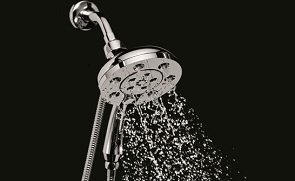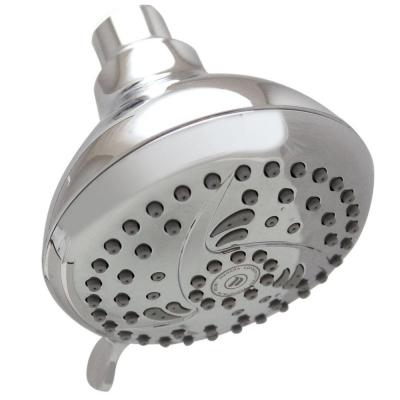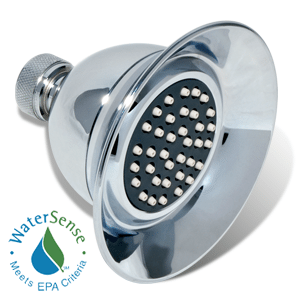Conserving water and saving on energy costs are some of the driving forces behind low-flow showerheads. But the quality of the shower experience is often less than optimal. Technology has brought back the enjoyment to low-flow showers, and there are a number of options that can still save water and energy without compromise. And, in areas of the country where water is in high demand, rationed or expensive, monitoring water use is essential.
First, it’s important to understand how low flow showerheads increase the pressure of water. The showerheads work in either of two ways, aeration or laminar-flow. Aeration increases the force of the water by mixing it with air to create a jetted flow. Aerating showerheads can produce a fairly misty shower, so if you live in an area where humidity is a problem, you may want to select a laminar-flow showerhead. These showerheads produce individual streams of water. Either option won’t use more than 2.5 gallons per minute at 80 psi, or 2.2 gallons per minute at 60 psi, the national standards. There can also be a loss of heat in the action of aerating, while laminar-flow units maintain the temperature of the hot water better.
 Delta’s H2O Kinetic showerhead (top right) takes maximizes aeration flow design to a new level, by using windshield wiper technology to control droplet formation and speed to create a drenching sensation with an ultra-low 1.62 gallons per minute.
Delta’s H2O Kinetic showerhead (top right) takes maximizes aeration flow design to a new level, by using windshield wiper technology to control droplet formation and speed to create a drenching sensation with an ultra-low 1.62 gallons per minute.
Niagara’s Vara Spa (left) uses laminar-flow and other unique technology to provide a constant output “regardless of pressure.” The spa version has a low flow rate of 2.0 gallons per minute.
Bricor’s Eco-Bravo® PC showerhead (bottom right) uses a patented vacuum chamber to control flow and reduce water usage to a  stingy 1.5 gallons per minute rate. This showerhead carries a WaterSense label that meets EPA criteria.
stingy 1.5 gallons per minute rate. This showerhead carries a WaterSense label that meets EPA criteria.
A visit to a plumbing showroom with active displays may offer a chance to feel the flow before purchasing.
